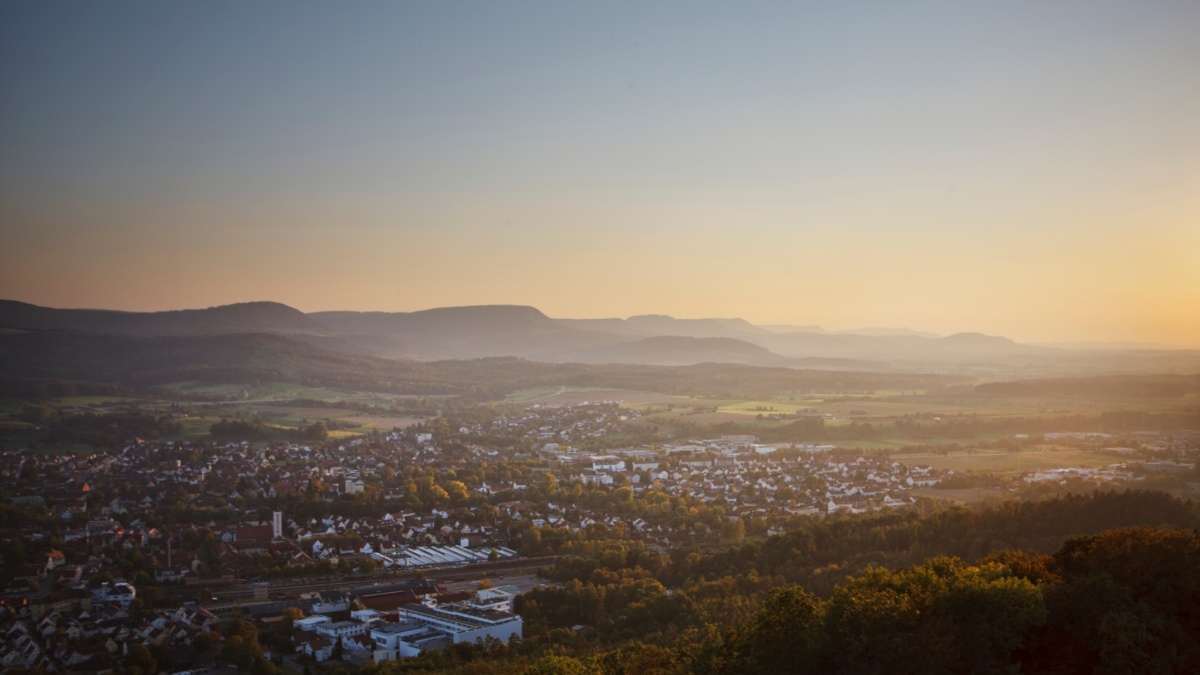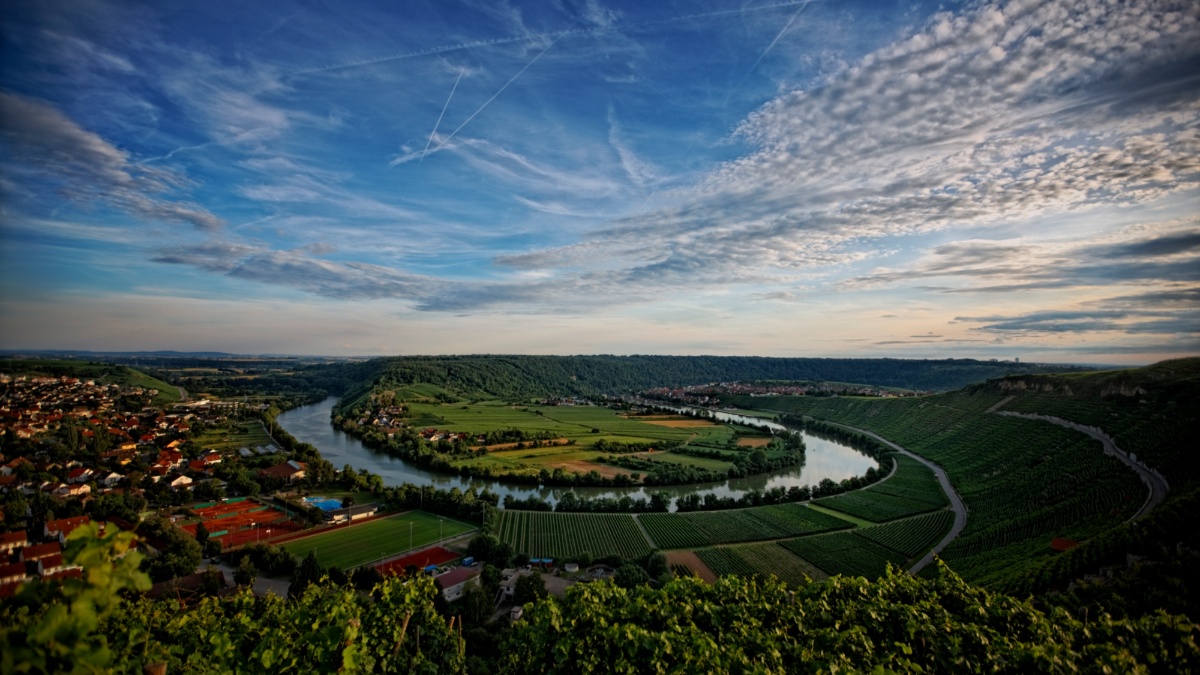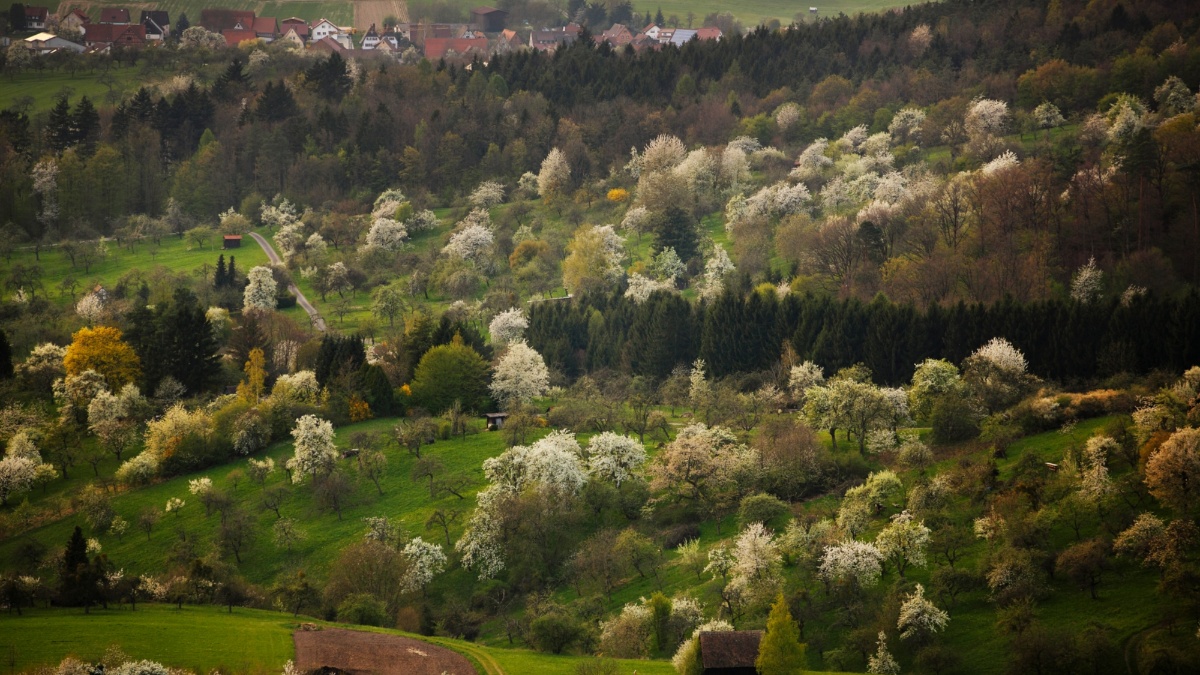The Stuttgart region is located in the centre of the state Baden-Württemberg and extends over 3 654 km2. It includes the urban district of Stuttgart and the surrounding districts of Böblingen, Esslingen, Göppingen, Ludwigsburg and the Rems-Murr district.
Inhabitants and area
179 cities and municipalities belong to the Stuttgart tegion. Around two thirds of the 179 municipalities in the Stuttgart region have fewer than 10 000 inhabitants, and one third of the municipalities have fewer than 5 000 inhabitants. People, jobs and infrastructure facilities are particularly concentrated in the region: 25% of the population of Baden-Württemberg live on just 10% of the land area. The number of inhabitants is developing positively. Migration movements in particular played a part in this, but natural population growth also contributed to the positive development. With a population density of 763 inhabitants per square kilometre, the Stuttgart region is significantly more densely populated than other regions in Germany, such as the Munich region with around 530 inhabitants per square kilometre (source: Planungsverband Äußerer Wirtschaftsraum München). Even in a European comparison, only a few regions (for example Zuid Holland with The Hague or Île-de-France with Paris) have a higher population density than the Stuttgart region.
Economy, infrastructure and land use
30% of the state's economic output is generated in the Stuttgart region. The GDP of the Stuttgart region is 149 billion euros. This is roughly equivalent to the gross domestic product of Hungary (126 billion euros 2017, Eurostat). Compared to other regions in Germany, in the Stuttgart region the manufacturing industry makes up a large share of the region’s industry. Other important economic sectors in the region are vehicle construction, mechanical engineering and electrical engineering. The regional employment focal points are, alongside the state capital Stuttgart, generally the medium-sized centres of the Stuttgart region. This leads to high commuter flows in and out of these cities (around 75% of employees subject to social insurance contributions do not work in their place of residence).
There are important infrastructure facilities in the region, such as the airport, port, trunk roads and high-speed rail routes, which are of importance far beyond the region. The main traffic routes from north to south (Frankfurt/Würzburg in the direction of Lake Constance) and the axes from west to east (from the Rhine Valley via Munich and Nuremberg to Eastern Europe) intersect in the Stuttgart region.
The share of area used for settlement and traffic is comparatively high at around 23%, while in Baden-Württemberg it is only 14% overall. In international comparison with other metropolitan regions, the region still has a high proportion of forest and agricultural areas. They make up 31% and 45% of the region's area, respectively. In comparison, the proportion of area used for settlement and traffic in the Munich region is 16%.
Natural conditions and climatic classification
The Neckar and its tributaries divide the landscape into diverse areas. The forests of the Keuperbergland follow the gently rolling, agricultural Gäu landscapes. The Stuttgart region is largely located in the Neckar Basin, nestled between the Black Forest in the southwest, the Swabian Alb in the southeast, Schurwald and the Swabian Forest in the east, the Stromberg and Heuchelberg area in the northwest and the Swabian-Franconian Forest in the northeast. However, the southern parts of the Esslingen and Göppingen districts are already on the mountain ranges of the Swabian Alb.
While there are altitudes of 100 to 200 m in the Neckar Valley in the Ludwigsburg district, parts of the Göppingen district are already at an altitude of 750 to almost 1000 m. In the district of Göppingen there are on average lower air temperatures, higher amounts of precipitation and higher wind speeds than in the district of Ludwigsburg. Stuttgart has its own urban climate due to its location at the valley bottom, with height differences of approx. 260 m between the valley floor and the ridge, the built development, the degree of soil sealing and the building materials used (Nationalatlas, 2003).
Baden-Württemberg lies in the submaritime to subcontinental area, but climatically is mainly determined by the relief with its large differences in altitude. The low mountain ranges of the Black Forest and Swabian Alb create striking windward-leeward effects that affect all climate elements, such as solar radiation, air temperature, humidity, precipitation and wind. Particularly the slopes facing south and south-west are favoured by solar radiation.
Spatial development - goals and principles
The aim of regional development in the Stuttgart region is to open up opportunities for continued high economic performance. The basis for this is a sustainable, socially just, ecologically viable and economically efficient development of the region, which ensures adequate housing supply and enables the maintenance and creation of jobs.
The diversity of the landscape areas is to be preserved and, in its near-natural development, also promoted as a recreational area. The infrastructure facilities achieved in the municipalities must be further developed in a sustainable manner. The development of settlements, open spaces and traffic must be geared towards the economical use of natural and financial resources, sustainability, social cooperation, integration and mobility of all population groups.
Climate change mitigation is a central task in the spatial development and organization of the region. A reduction in climate-affecting emissions and adaptations to the consequences of global climate change must be implemented at local and regional level.
Climate adaptation in the region
For the Stuttgart model region—as a polycentric, high-density area with strong economic growth—adaptation to the effects of climate change is a central requirement for ensuring quality of life for the people living in the 179 cities and municipalities and for ensuring the safety and competitiveness of the region. The region is already being affected by massive heat stress, air hygiene problems and heavy rainfall events. Appropriate precautions against the dangers of climate change particularly important for the region are to be taken, especially in the context of space-specific concretizations at the city-regional level.
In the Stuttgart region, the functions are highly interconnected and integrated throughout the region but the administration is made up of many small parts. The challenges associated with climate change can hardly be mastered within individual municipal boundaries. Therefore, models for adaptable and resilient spatial structures are to be created and climate adaptation is to be regarded as an integral part of municipal, district or regional development planning. Climate adaptation requires supra-local coordination within the framework of regional planning.




